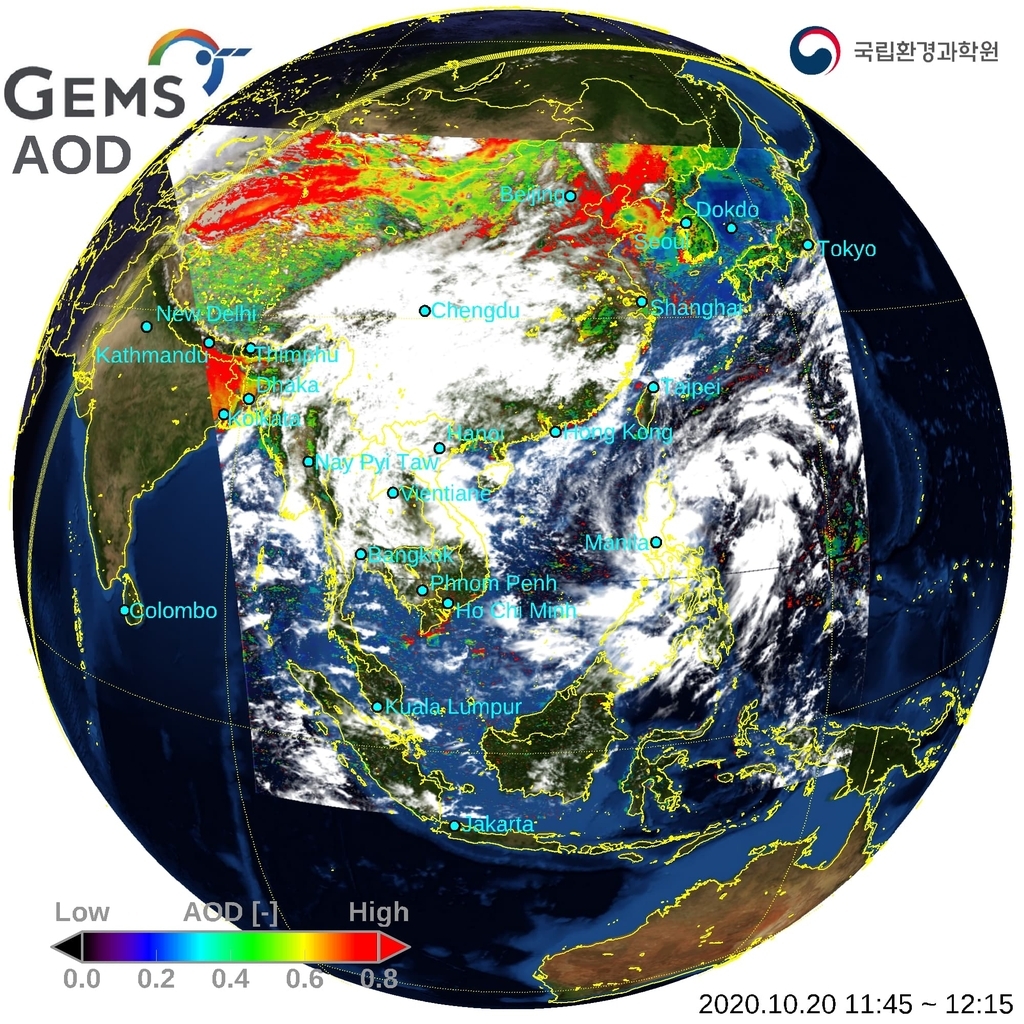S. Korea releases satellite images of air quality in East Asia
By YonhapPublished : Nov. 18, 2020 - 14:33

South Korea on Wednesday released satellite imagery showing the movement of fine dust from China to South Korea in the latest scientific evidence that China is partly to blame for poor air quality in the region.
The Chollian-2B, a South Korean environmental satellite, observed high concentrations of fine dust from China moving to the Korean Peninsula on Oct. 20, according to its imagery released by the Ministry of Science and ICT.
The move comes as South Korea and China work together to try to reduce fine dust emissions amid growing health concerns in South Korea.
Some particles less than 10 micrometers in diameter can get deep into lungs, and some may even get into the bloodstream.
Particles less than 2.5 micrometers in diameter, which are also known as fine particles or PM2.5 and are approximately 1/30th the average width of a human hair, pose the greatest risk to health, according to the US Environmental Protection Agency.
Other imagery included high levels of nitrogen dioxide on Sept. 9 in industrial regions and major cities in East Asia, including South Korea's capital, China's Shenyang and Beijing and Japan's Osaka.
South Korea launched the satellite on Feb. 19 to accurately observe air pollution levels in the region as South Korea struggles with fine dust and poor air quality.
The science ministry said it will release the satellite's full observations after the first half of next year, following review by experts.
The Chollian-2B is equipped with a geostationary environment monitoring spectrometer that allows observation of air pollutants such as nitrogen dioxide, sulfur dioxide and ozone.
The satellite has a 10-year life cycle and can observe around 20 countries across Asia from India to Japan.
The science ministry said it plans to share the data with 13 other countries in the region, including Thailand and Indonesia. (Yonhap)
The Chollian-2B, a South Korean environmental satellite, observed high concentrations of fine dust from China moving to the Korean Peninsula on Oct. 20, according to its imagery released by the Ministry of Science and ICT.
The move comes as South Korea and China work together to try to reduce fine dust emissions amid growing health concerns in South Korea.
Some particles less than 10 micrometers in diameter can get deep into lungs, and some may even get into the bloodstream.
Particles less than 2.5 micrometers in diameter, which are also known as fine particles or PM2.5 and are approximately 1/30th the average width of a human hair, pose the greatest risk to health, according to the US Environmental Protection Agency.
Other imagery included high levels of nitrogen dioxide on Sept. 9 in industrial regions and major cities in East Asia, including South Korea's capital, China's Shenyang and Beijing and Japan's Osaka.
South Korea launched the satellite on Feb. 19 to accurately observe air pollution levels in the region as South Korea struggles with fine dust and poor air quality.
The science ministry said it will release the satellite's full observations after the first half of next year, following review by experts.
The Chollian-2B is equipped with a geostationary environment monitoring spectrometer that allows observation of air pollutants such as nitrogen dioxide, sulfur dioxide and ozone.
The satellite has a 10-year life cycle and can observe around 20 countries across Asia from India to Japan.
The science ministry said it plans to share the data with 13 other countries in the region, including Thailand and Indonesia. (Yonhap)









![[Hello India] Hyundai Motor vows to boost 'clean mobility' in India](http://res.heraldm.com/phpwas/restmb_idxmake.php?idx=644&simg=/content/image/2024/04/25/20240425050672_0.jpg&u=)










